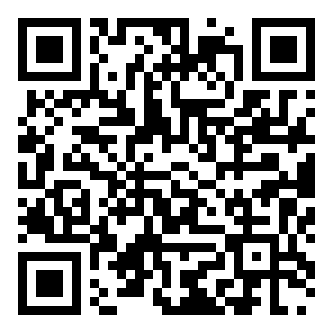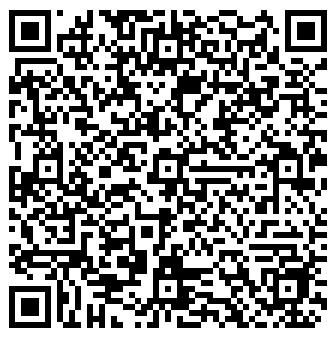Blogs & Articles: What Is Commodity Money? 🔗 27 weeks ago

- Category: Blogs & Articles | Bitcoin Magazine: Bitcoin News, Articles, Charts, and Guides
- Author(s): Bitcoin Magazine
- Published: 27th October 2023 17:17
Commodity money is a form of money that derives an intrinsic value from its underlying commodity and the supply and demand dynamics. Gold and silver have been accepted as commodity money for centuries because of their scarcity and desirability.
Commodity money has some inherent limitations, such as the challenge of transportation and storage of larger quantities. This physical challenge is one of the primary reasons why it was replaced by more flexible solutions like representative and fiat money.
Commodity money is in contrast to representative money and fiat money. Representative money has no intrinsic value but represents something of value — such as gold or silver — for which it can be exchanged. Fiat money derives its value from the trust in the government that has established it as money.
Origins Of Commodity Money
A commodity monetary system has historically used a form of currency where its physical substance holds value. Its origin dates back to ancient civilizations, where trade and barter were commonplace. In early human societies, people often relied on barter to conduct trade.
However, due to barter limitations such as the double coincidence of wants — meaning that both parties had to desire what the other party had to offer — people began to use certain commodities with intrinsic value as a medium of exchange to facilitate trade.
Different civilizations worldwide adopted various commodities as a form of currency based on their availability and desirability. For example, barley was commonly used as a medium of exchange in ancient Mesopotamia.
In ancient Egypt, grain, cattle, and precious metals like gold and silver served as commodity money. Cowry shells were used as currency in various parts of Africa, Asia, and the Pacific islands. Salt was used as money in certain societies, due to its importance as a preservative.
As civilizations advanced and developed more sophisticated economies, the use of commodity money evolved. Precious metals such as gold and silver gained prominence due to their durability, divisibility, and scarcity attributes. These metals could be minted into standardized coins, which made them more convenient to use as currency.
Characteristics Of Commodity Money
While the use of traditional commodity currency has largely diminished in modern economies, its historical significance is undeniable. It laid the foundation for the development of monetary systems and the concept of money as a medium of exchange, store of value, and unit of account. Here are the most significant characteristics of commodity money:
- Durability: commodity money, like metals, is typically very durable, ensuring that it can withstand wear and tear over time. It cannot be applied to other commodities like seashells or grain, but this characteristic is essential to maintain the value and integrity of the currency.
- Universally acceptable: commodity money is generally widely accepted within a society or among trading partners. Individuals recognize and value it as a medium of exchange for goods and services.
- Scarcity: the underlying commodity is relatively scarce or limited in supply. Scarcity enhances the currency's value, as it is not readily available in abundance.
- Recognizability: commodity money should be easily recognizable and distinguishable to ensure authenticity and prevent counterfeiting. This characteristic promotes trust and acceptance among users.
- Store of value: due to the inherent value of the underlying item, commodity money can be valuable to store over time as it retains its worth and can be saved or accumulated for future use.
Commodity Money Examples
Traditionally, commodities such as gold, silver, salt, shells, and other valuables used as commodity money, were chosen as currency because they possessed qualities like durability, divisibility, and scarcity. People recognized their inherent worth and accepted them in exchange for goods and services.
- Cocoa beans: their use as commodity money began with the Maya. Initially used as barter for other commodities such as food, clothes, gems, and even enslaved people, they were adopted as a currency when the Aztecs became the most advanced nation in Central America and overtook the Maya.
- Sea shells: they have served as commodity money, particularly in parts of Africa, Asia, and the Pacific islands. Their unique shape, scarcity, and cultural significance made them highly desirable as a medium of exchange.
- Rai stones: large circular stone discs used as currency on the island of Yap in Micronesia. These stones, which had a significant size and weight, were valued for their scarcity and historical significance.
- Glass beads:
- Gold: has been widely used as a form of commodity money across different civilizations and time periods. Its scarcity, durability, and desirability have made it a valuable medium of exchange.
- Silver: similar to gold, silver has also been used as commodity money. It is relatively more abundant than gold and has been used in coinage in many societies.
- Bitcoin: unlike traditional commodity money, bitcoin is not backed by a physical item but derives its value from supply and demand dynamics and its independence from intermediaries like a government or a central entity.
Pros And Cons
Commodity money is generally perceived to be stable, with intrinsic value due to the valuable and secure underlying items it is made of. However, its lack of flexibility in being divisible and adaptable to changing economic needs makes it impractical for a modern society that works on faster transaction turnaround and more efficient systems compared to when international trade wasn’t on the same scale as today.
The inflexibility of commodity money created the need for paper money which surely had the advantage of being more easily manageable, but, at the same time, it allowed the system to be more easily manipulated by those who controlled the reserves.
Paper money led to a fiat system that could face practical challenges such as storage, transportation, and the security of large qualities of physical commodities. However, implementing a fiat system also meant removing protection against government manipulation that could be guaranteed by decentralized commodities, leaving the society with more controlling authorities that could often exert their power beyond limits.
Commodity Money vs. Fiat Money
Over time, as economies grew and became more complex, the limitations of commodity money became apparent. Issues such as the difficulty of transporting large amounts of physical commodities and the fluctuating value of the underlying items led to the development of representative money and, eventually, fiat money.
Commodity money offers stability as its value is relatively independent of monetary policies or government actions, while fiat money provides flexibility and allows for monetary policy control. However, since it’s strictly related and regulated by governments, fiat money has often become a control tool leading to extreme measures such as lowering interest rates or increasing the money supply.
While such measures may stimulate the economy, they can also lead to speculative bubbles that can trigger recessions, inflations, and even hyperinflations that are more common and severe in fiat systems.
A return to commodity money?
While traditional commodity money is not widely used in modern economies, it played an essential role in developing monetary systems and the evolution of money to facilitate trade and economic activity. It certainly inspired Satoshi Nakamoto when he created Bitcoin.
In 2009 we saw the emergence of a digital asset that is considered a return to commodity money. Bitcoin has all the most significant properties of both commodity and fiat currency. It shares scarcity and divisibility with commodity money, other than a limited supply of a maximum cap of 21 million coins. Like gold, Bitcoin is a bearer asset, and its supply is extremely difficult to increase.
Similar to fiat, bitcoin can be divided into smaller units, with the smallest unit being one hundred millionths of a bitcoin, known as a Satoshi. Combined with unique decentralization and censorship resistance characteristics, Bitcoin is the most sound, complete and optimal type of money humanity has ever known.








